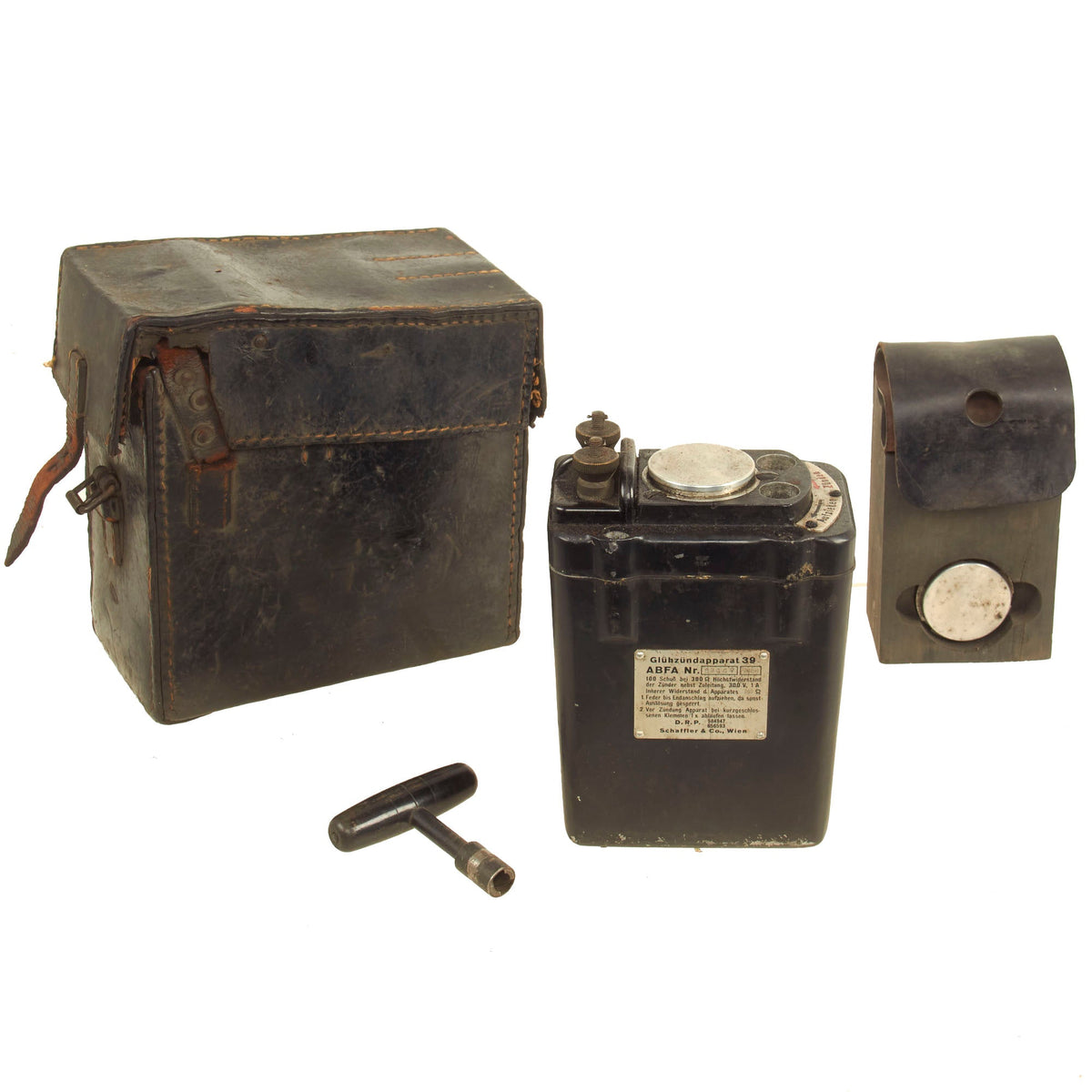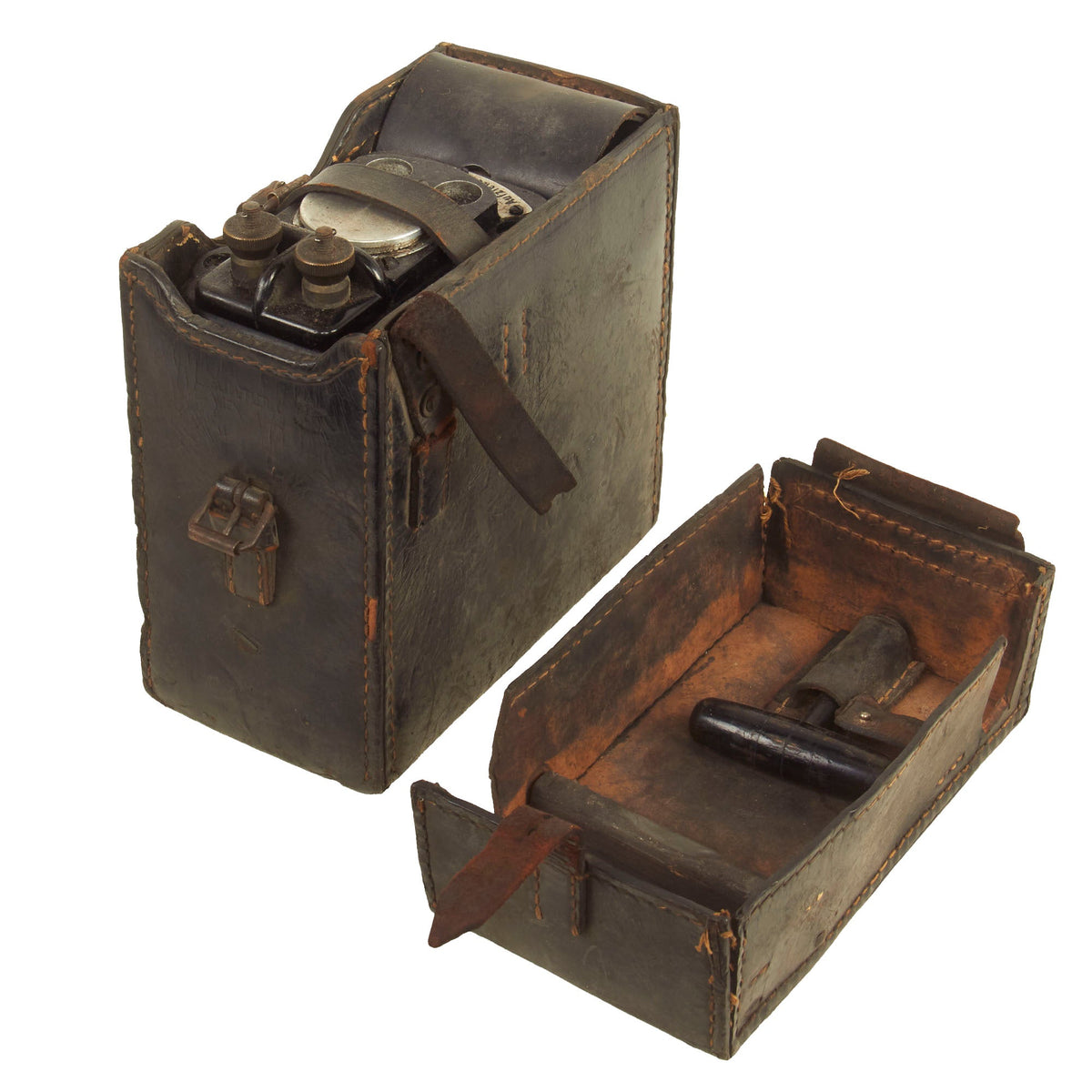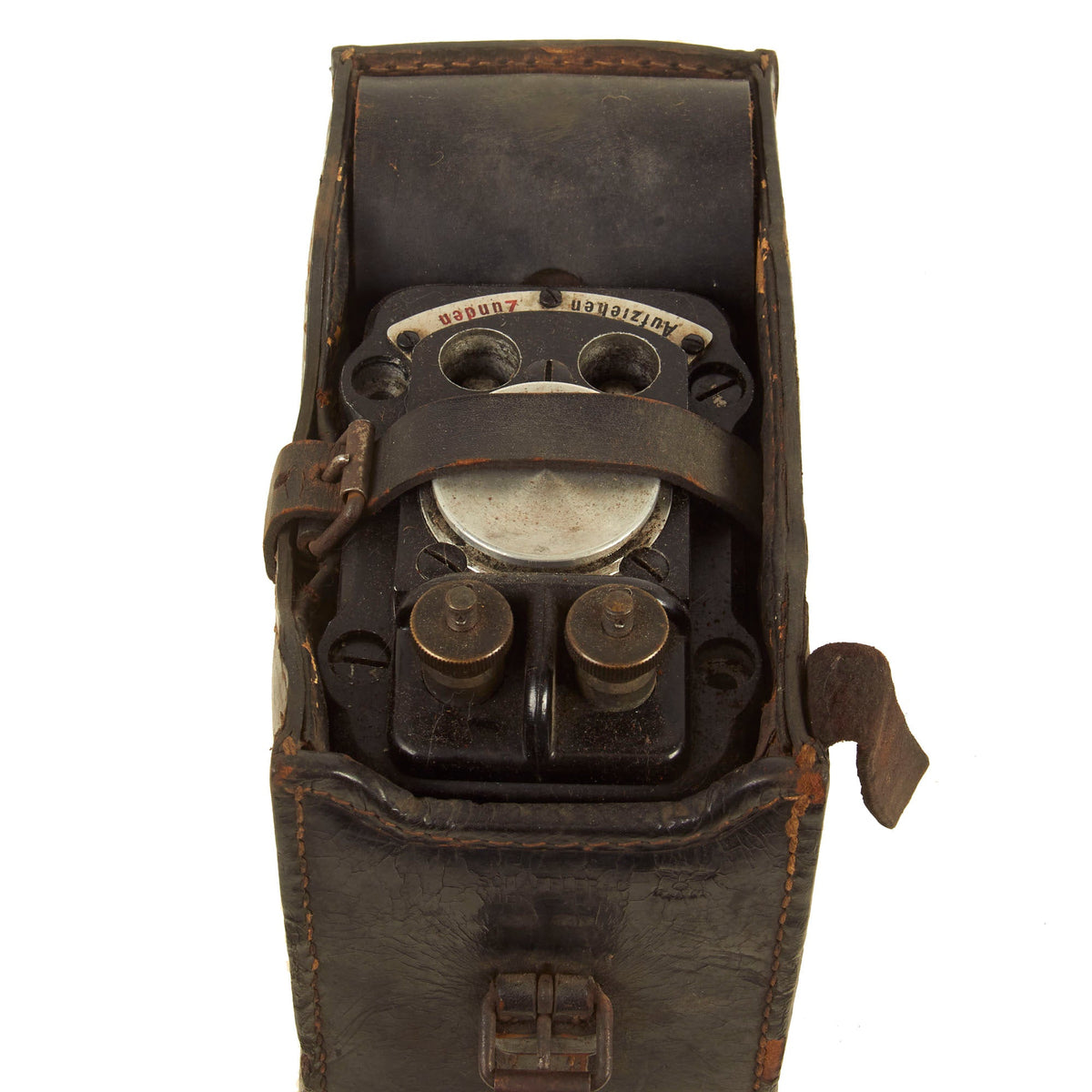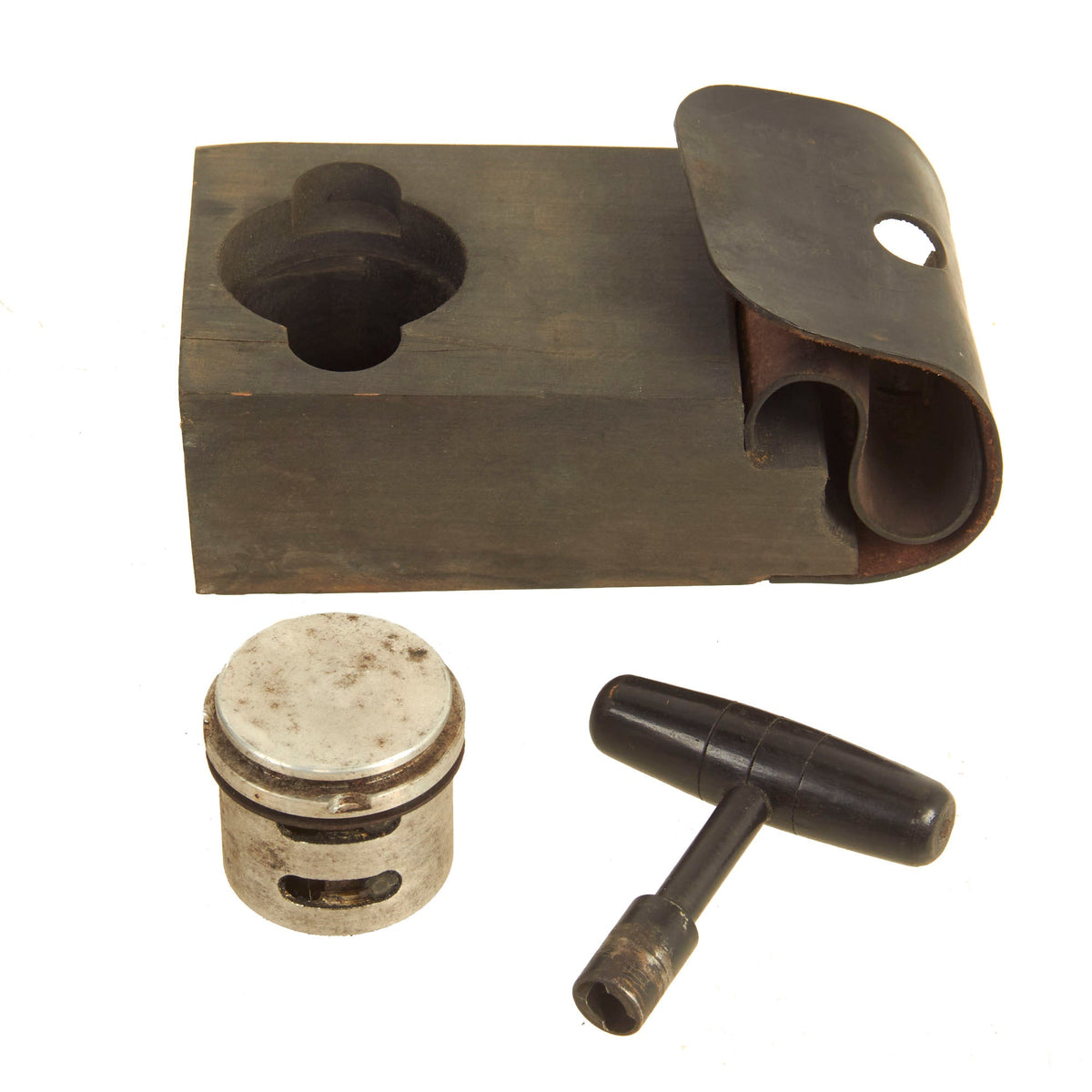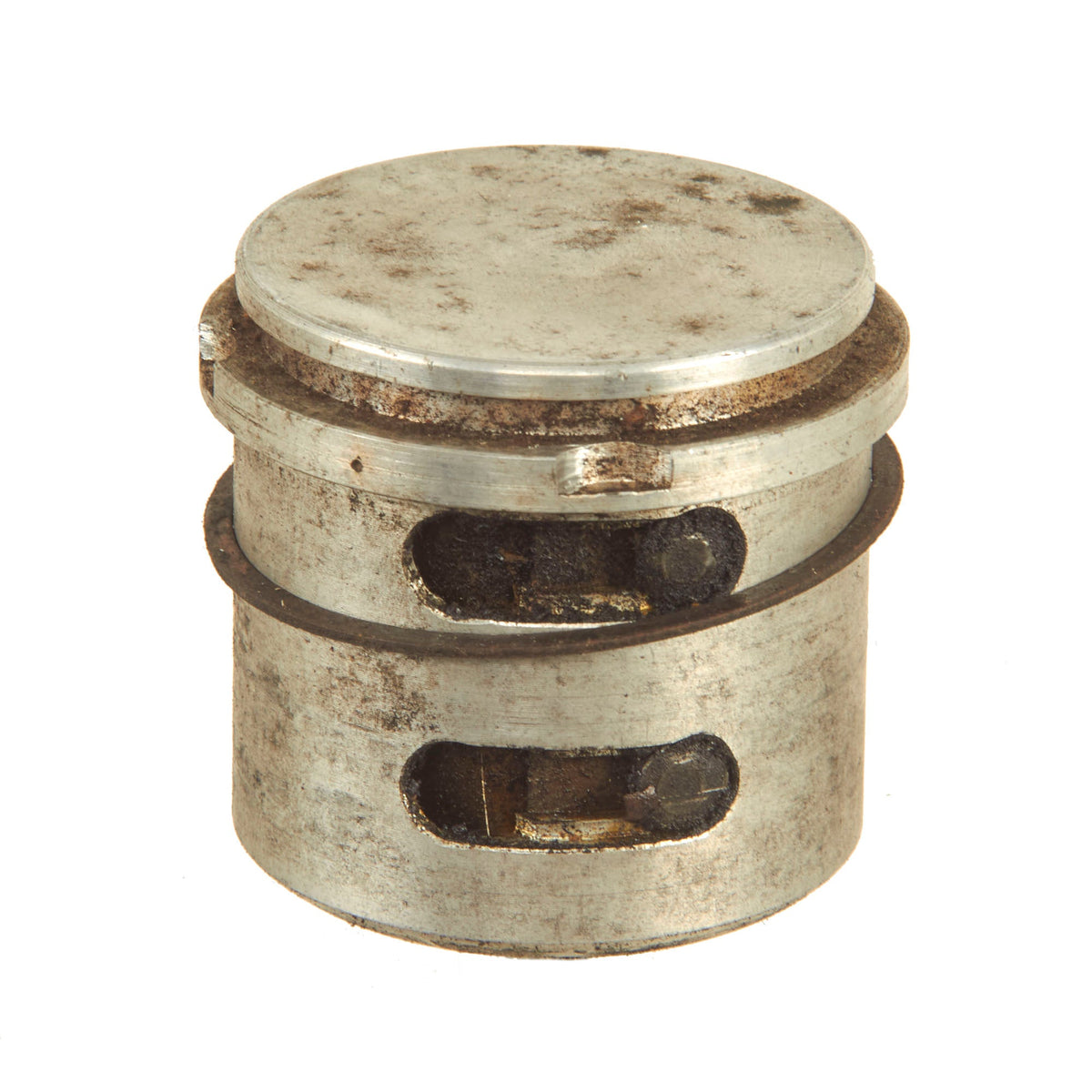Original German WWII 1940 Dated Combat Engineer M39 Explosive Detonator with Case & 2 Handles – Glühzündapparat 39 Original Items
$ 1.895,00 $ 473,75
Original Item: Only One Available. Each Division in the German army, and the Waffen-SS, had a Pionier (Combat Engineer) battalion, which consisted of personnel specially trained in destroying enemy obstacles, creating forward defensive positions, bridging and assault tactics. As the spearhead troops, the Engineers were issued with assorted specialized equipment to help in this task. This included assault packs, pick axes, saws, long handle shovels, wire cutters, explosive tool kits, mines, and demolition charges. These of course required the appropriate explosive detonators, of which there were no fewer than four, slightly different, models, consisting of the M26, M37, M39 and M40. Of Note: As the spearhead troops, personnel serving with an Engineer unit, generally experienced higher casualties rates then standard units.
This is a very nice example of the M39 explosive detonator, officially termed the Glühzündapparat 39 (Glow Ignition Device 39), which was capable of producing 300 volts of electrical potential to detonate explosives. It still has thee original data plate on the side, which gives the model designation, serial number, and year of manufacture.
Glühzündapparat 39
ABFA Nr. 93167 1940
Under this are some instructions regarding shorting the device, and below this is the makers name of Schaffler & Co,. Wien. The top of the detonator has two terminals to attach wires to, and also has a central insert which we assume is some type of generator spool. It has two attachment points for a winding handle, which are labeled Aufziehen (Wind Up) and Zünden (ignite). Two of four screws that retain the top are still present, and the detonator will wind up, but we were not able to get it to fire. The detonator itself measures 8″H x 5 1/4″ x 3 5/8″.
Included with the detonator are TWO handles, as well as a spare central spool insert. These are all stored along with the detonator in the original leather case, which measures 8 1/2″ 8 1/2″ x 4 1/2″. The case is in good service used condition and it looks like it was field modified for a shoulder strap (now missing), with areas of the lid cut out. The stitching on the corners is a bit degraded, and the stitching for the lower portion of the lower leather “hinge” is completely pulled out, so the lid can be removed. This stitching might be possible to repair.
A very interesting and hard to find piece of German WWII Pionier militaria, ready to display!
Fast Shipping with Professional Packaging
Thanks to our longstanding association with UPS FedEx DHL, and other major international carriers, we are able to provide a range of shipping options. Our warehouse staff is expertly trained and will wrap your products according to our exact and precise specifications. Prior to shipping, your goods will be thoroughly examined and securely secured. We ship to thousands clients each day across multiple countries. This shows how we're dedicated to be the largest retailer on the internet. Warehouses and distribution centres can be located throughout Europe as well as the USA.
Note: Orders with more than one item will be assigned a processing date depending on the item.
Before shipping before shipping, we'll conduct a thorough inspection of the items you have ordered. Today, the majority of orders will be delivered within 48 hours. The delivery time will be between 3-7 days.
Returns
The stock is dynamic and we cannot completely manage it because multiple stakeholders are involved, including our factory and warehouse. So the actual stock may alter at any time. It's possible that you may not receive your order once the order has been made.
Our policy is valid for a period of 30 days. If you don't receive the product within 30 days, we are not able to issue a refund or an exchange.
You can only return an item if it is unused and in the same state as the day you received it. You must have the item in its original packaging.
Related products
Uncategorized
Uncategorized
Australian WWII Owen MK1 Machine Carbine SMG Custom Fabricated Replica with Sling Original Items
Uncategorized
Uncategorized
Uncategorized
Band of Brothers ORIGINAL GERMAN WWII Le. F.H. 18 10.5cm ARTILLERY PIECE Original Items
Uncategorized
Uncategorized
Uncategorized
Uncategorized
Uncategorized
Uncategorized
Uncategorized
Armoured Fighting Vehicles of the World: AFVs of World War One (Hardcover Book) New Made Items
Uncategorized
Angolan Rebel 1970s era 60mm Inert Display Mortar from Angolan Civil War Original Items
Uncategorized
Uncategorized
Uncategorized
Uncategorized
